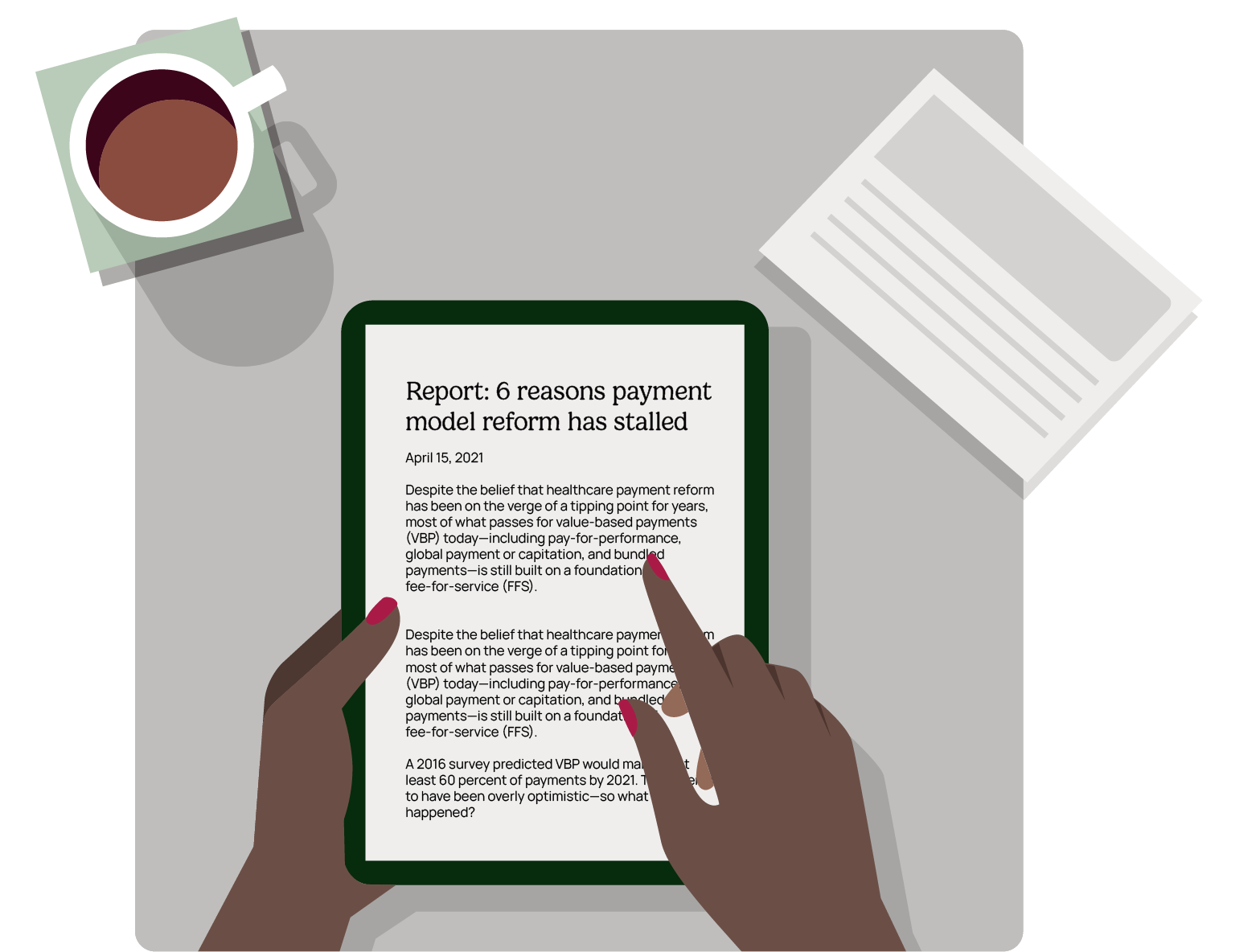April 15, 2021
Despite the belief that healthcare payment reform has been on the verge of a tipping point for years, most of what passes for value-based payments (VBP) today—including pay-for-performance, global payment or capitation, and bundled payments—is still built on a foundation of fee-for-service (FFS).
A 2016 survey predicted VBP would make up at least 60 percent of payments by 2021. That seems to have been overly optimistic—so what happened?
According to a new report from Sage Growth Partners, there appear to be multiple factors working against the shift, including entrenched payment models, competing priorities, and a lack of mature analytics, risk assessment, and decision tools.
“We’re still climbing the rather steep maturity curve for collecting and using our mountains of data in timely and meaningful ways,” the report says. “While we’ve made progress in assessing member and patient risk, we continue to face massive challenges in finding and proactively treating those with risk factors. … As artificial intelligence (AI) grows in acceptance and adoption, this should improve.”
The healthcare industry’s well-earned reputation for adapting too slowly to change is also cited, as well as the complexity of the concept—too many models and metrics, and a broad range of meanings for the term “value-based.”
“Physicians, hospitals, and health systems have a different set of payment and quality rules for different populations of patients,” according to the report. “Keeping track of that and adjusting how you treat a patient based on those rules is neither feasible nor okay.”
To push true healthcare reform, we need simpler payment rules that make consistent and repeatable delivery of care for all patients a priority.
Learn more by reading the full report: “Where’s the Value? Six reasons why healthcare payment reform (VBP) has stalled.“





